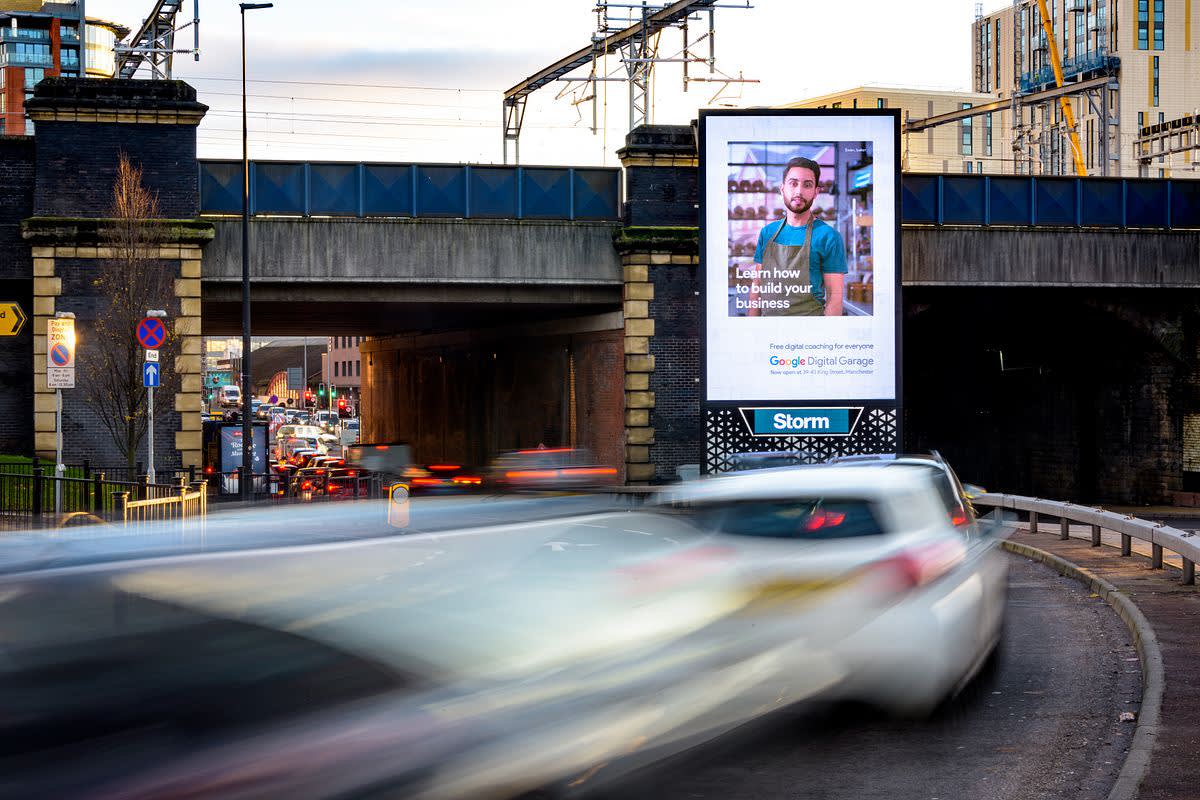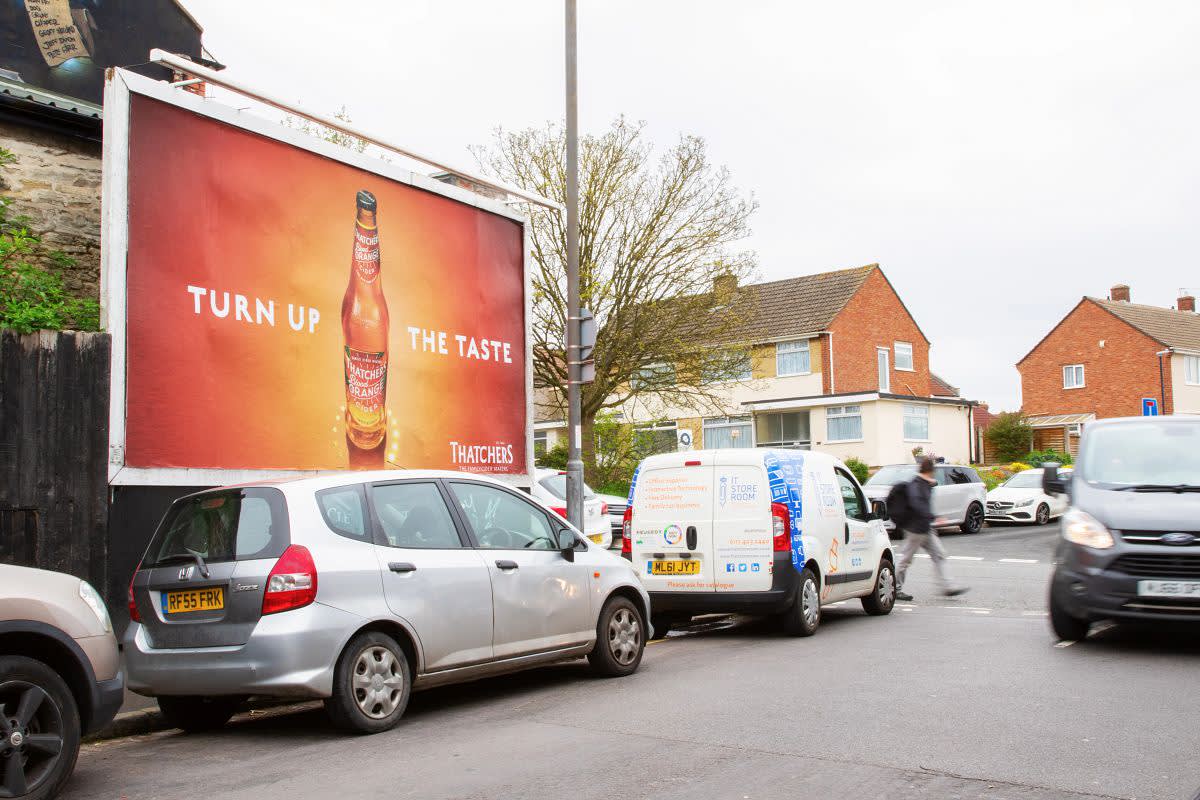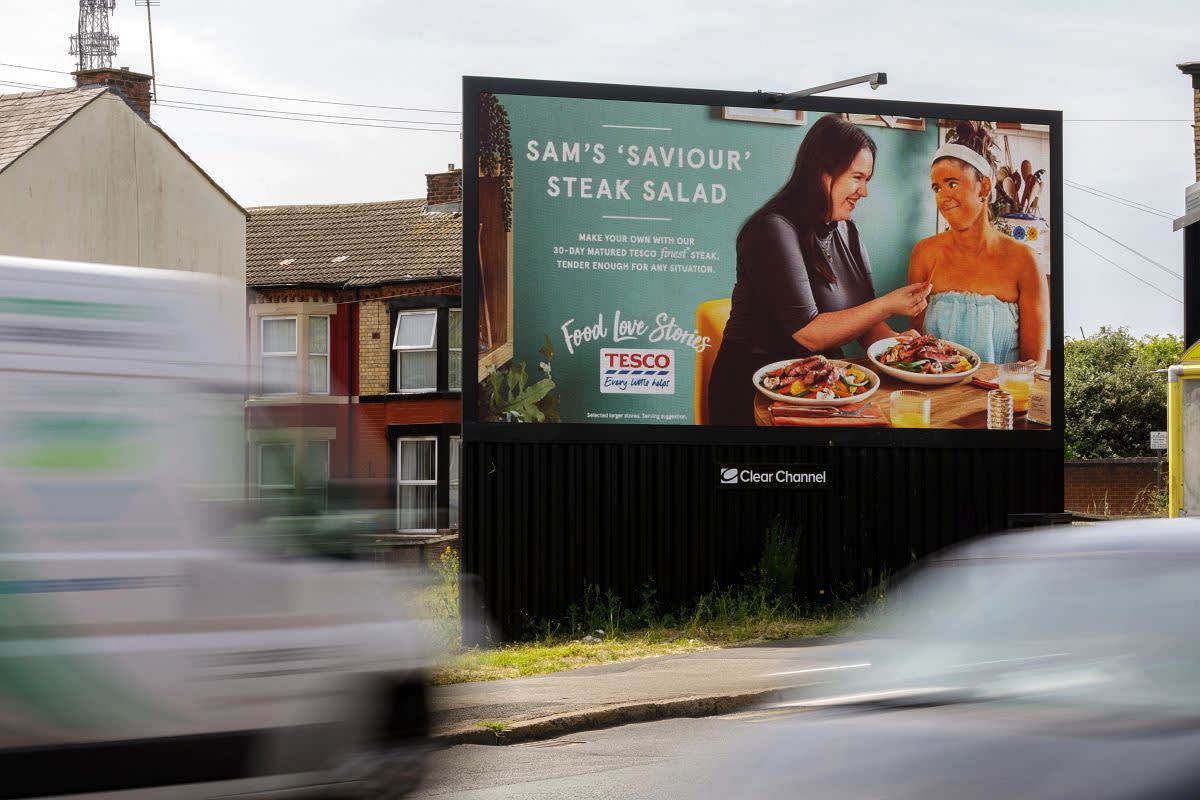Everyone’s familiar with traditional, static billboards. But recent innovation in the Out of Home space has meant that digital billboards are becoming an increasingly common presence on our high streets and roadsides.
As it’s much newer, you might not know as much about digital billboard advertising as you do traditional billboard advertising. You might also be confused as to whether it’s a better option for your brand – in this guide, we’ll look to change that.
Let’s explore traditional vs digital billboards.

What is a digital billboard?
A digital billboard is an electronic screen placed in a public area that displays digital content, such as animations or dynamic messages. Brands and organisations use digital billboards to advertise their products, services and promotions.
Digital billboards are connected to the internet, which is how they’re controlled. Data is transferred in two ways – adverts can be updated or revised remotely, and the screens can capture and send information back to the control hub.

What is a traditional billboard?
A traditional billboard is a large outdoor advertising structure that’s also designed to display marketing material. But, unlike with its digital variant, these messages are printed onto vinyl which is then mounted onto the billboard.
Traditional billboards can’t facilitate dynamic elements, which is why they’re also commonly known as static billboards.
When the time comes to update a static billboard to a new advertiser, a specialist must attend the site and complete the changeover manually. The lack of flexibility in this process is one of the core reasons why traditional billboards are slowly being replaced in favour of digital ones.
Comparing digital and traditional billboards
There are pros and cons to both traditional and digital billboards. Traditional ones offer the advertiser sole occupancy for an extended period, are subject to fewer regulations and are often cheaper. Digital ones offer greater flexibility, better-defined targeting and the opportunity to engage audiences with interactive features.
Here’s a table showing the key differences between digital and traditional billboards:
| Feature/benefit | Traditional billboards | Digital billboards |
|---|---|---|
| Display method | Printed vinyl | LED screen |
| Design | Static images or messages | Dynamic content |
| Visibility | Excellent visibility during daylight hours and artificial. lighting at night. Not affected by glare | Adjustable lighting to ensure optimal visibility at all times. Occasionally affected by glare |
| Interactivity | Not interactive without customisation and even then, limited options are available | Multiple options for interactive elements, e.g. QR codes, facial recognition technology and audience participation via social media |
| Targeting | Targeted by billboard location | Can target by location, time of day, demographic and more |
| Regulations | Subject to basic regulations, e.g. no use of foul language | Might be subject to additional safety regulations, e.g. no video content on roadside billboards |
| Analytics | Limited analytics capabilities | Advanced analytics, including impression counts and engagement rates |
| Cost | Usually cheaper | Usually marginally more expensive |
| Environmental impact | Paper waste and energy used for night-time lighting | The energy required to power (although renewable sources are often used) |

Design and customisation
Let’s be clear about one thing: creativity doesn’t require technology. Plenty of incredible traditional billboards use static designs to great effect. However, digital billboards offer more freedom when it comes to design.
Animation, video, subtle motion and augmented reality are all easy to do with digital billboards. On top of this, dynamic content can be used to adapt the creative depending on the time of day, passing audience, or other contextually relevant factors.
That’s not to say traditional billboards don’t have their place. There’s no point adding fancy visual techniques if a static creative gets the message across in a more effective way. And traditional billboards can be customised in ways that are impossible to do with a flat screen – for example, with bespoke 3D builds like this Krispy Kreme billboard.

Reach and impact
Both digital and traditional billboards are usually placed in strategic locations – most often where there is either heavy footfall or vehicular traffic. This means they’re both exposed to large numbers of the public and are capable of reaching people of all demographics.
The difference in their relative impact therefore mostly comes down to the time in which they occupy this space. Traditional billboards run the same advert continuously, usually for a period of two weeks or more, while digital billboards can rotate creatives from different advertisers throughout the day.
This, along with features such as facial recognition, means that digital billboards can be used to target highly specific audiences. Better still, digital billboards can track and report on performance with perfect accuracy, whereas traditional billboards have to rely on estimations.

Pricing
More than anything else, the cost of billboard advertising is dictated by the size and location of the billboard. But, generally speaking, advertising on a digital billboard will cost slightly more than on a traditional one.
This is because of a few factors – first of all, digital billboards cost more to set up and maintain. Secondly, there’s often more demand for this type of billboard, which in turn raises the price. Thirdly, the additional capabilities that come with digital billboards (for example – advanced analytics, programmatic OOH and segmented targeting criteria) are all services that cost money to provide.
The good news is that the analytics platforms available for digital billboards enable advertisers to monitor and optimise their campaigns, improving ROI and ensuring every penny is well spent.
Which one is right for your brand?
Hopefully, you now have a better understanding of what traditional and digital billboards offer, as well as what sets them apart. There are solid uses cases for each, so it’s helpful to consider the following questions during the campaign planning stages:
Am I looking to achieve broad brand awareness or to speak to a specific group of people?
Do I want to use a single, consistent message, or to adapt my message depending on external factors?
What are the media consumption habits of my intended audience?
Do I want to repurpose content used for other channels, such as TV or social media?
What is my budget and how can I ensure it’s used effectively?
Is location actually more important than billboard type for my campaign?
If you’re still struggling to choose which one makes the most sense for your brand, please don’t hesitate to get in touch. We can provide more information, soothe any concerns and help you to pick with confidence.
Start your billboard campaign today
Interested in learning more about billboard advertising? Fill in our form and one of our team will be in contact shortly to answer your questions and get started on your next campaign.



